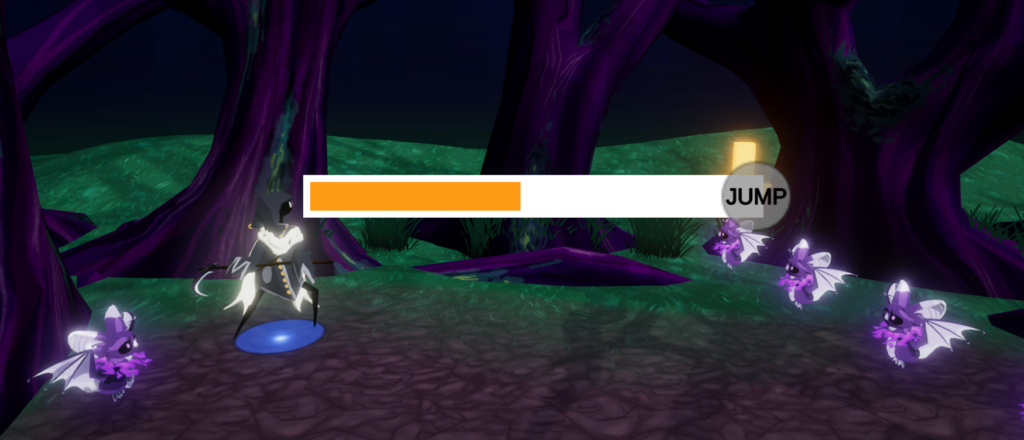Hey, It’s CJ again! I’ve been spending a lot of time lately working on the action commands for the combat, and so while I briefly talked about the action commands in my last blog post, I wanted to go a bit more in depth into what we’re planning for them, and give a couple examples!
2 quick warnings before you read ahead:
- The art in the screenshots are not final, ESPECIALLY the UI. It’ll look prettier in the end, promise!
- The action commands haven’t been tested extensively yet, so they may change or be entirely swapped out – this is just to give an idea of our current direction!
How will they work?
For the action commands, we want to make them quick enough so that they don’t disrupt the flow of the fight, but still be fun and unique – without getting too repetitive! These are some hard things to juggle, and so we’ll probably have to go through a lot of iterations to balance everything just right. Another big challenge is that we want to have a bunch of different phantoms that the player can catch, and we want each one to have unique moves and action commands – and with each phantom having multiple abilities, the amount of action commands really starts to add up!
So, how are we going to have unique action commands for each phantom? In short, the way we plan on setting them up is to have one type of action command for each emotion type, and then have variance in the command for each individual phantom and ability. This means that two phantoms of the same type will have similar style of action commands, but will still have a unique differences for each move – so that every move will be it’s own unique action command. To do this, when making action commands, we set it up so that each ability can have different settings for the action command. It’s a bit hard to explain without examples, so here are some of the different types of action commands we plan to have!
Joy

For the Joy action command, the minigame is a simple ‘press buttons with timing’ kinda deal. The meter will fill up, and once it lines up with the target, you gotta put in the input! This is very reminiscent of the basic hammer attack in Paper Mario, just with a slightly different approach. The basic idea of this minigame is pretty straightforward – in fact, the only input is just pushing a single button! However, there are quite a few things that can change in between different versions of joy abilities. To list a few:
- Have different button inputs, or make the required button random each time!
- More than one button – needing to press the same button at different times, or different buttons!
- Different speeds – some filling faster, some slower
And so, by changing these variables, we can make a ton of different versions of the same action command! One Joy phantom might have some quicker action commands but with random buttons, while another might be slower, but with multiple buttons required for each!
Fear

For the fear minigame, we wanted something a bit more different from action commands in other games. We also wanted one that reflected the emotion of fear – and thought that a bullet-dodging style of minigame would be perfect! For this action command, the name of the game is survival – avoiding the projectiles that fly at you, and successfully using your ability if you survive. Because we want the action commands to be quick, we plan on making the timer for ones like this short – and so we’ll instead add some difficulty by having different ways of launching projectiles at you! A few variables that the fear action commands will have include:
- Modifying the speed/movement of the player (Maybe restricting the movement to only one axis?)
- Changing how many projectiles/how fast they are/where they come from/how big they are/
- Giving the player room for a few extra hits, if needed 🙂
So yeah! Hopefully you have a better idea now of how action commands will work in The Phantom Keeper. We’re excited to keep experimenting with new variables and new styles of action commands, so stay tuned for probably more blog posts about action commands in the future!
